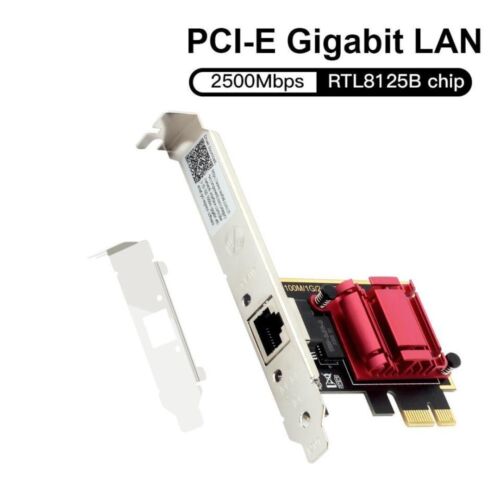1GbE adapters supports 10/100/1000, same way proper 10G port supports 1/2.5/5/10 speeds,
Nope. Many 10 Gbps NICs
do not support "multi-gigabit" speeds. They jump straight from 1 Gbps to 10 Gbps, with nothing in between. It's generally newer chips that support those speeds, not least because 2.5 and 5 Gbps came along much later (2016) than the original 10 Gbps standard.
BTW, it sounded like you were arguing that the 2.5 and 5 Gbps standards shouldn't even have been created. If you're now talking about negotiating down to those speeds, then I guess we're agreed that they serve a useful purpose.
Those may have been used, IDK, but RJ45 copper.
They can't have been new. Even for a used NIC, that's a suspiciously low price. I can find one dual-SFP+ NIC for that much, but most are closer to $30 or more. Given that these are used, there's no telling how well they work or whether they have any problems. Furthermore, it seems that all of these cheap cards card are
PCIe 2.0 x8, so you'd better have an x8 slot to spare. When you see things this cheap, there are usually good reasons why!
The cheapest I can find a 10 Gbps NIC with RJ-45 actually
selling for, is $50 - and it's just 1 port (and also
used):
Find many great new & used options and get the best deals for 10 Gigabit 10GBase-T Ethernet PCIe x4 Network Interface Card RJ45 AQTION AQC107 at the best online prices at eBay! Free shipping for many products!
www.ebay.com
You ought to check your facts. I'd bet you can probably find pricing data on 10 Gigabit MACs, if you're curious how much it would add to the COGS of a motherboard. Don't forget to apply the standard markup, too.
I just bought a motherboard with dual-10 Gigabit onboard and it cost me about $450. The only other thing at all special about it is the ASpeed AST2600 BMC on there. Based on the price difference between some boards that have a version with/without that BMC, I can say the markup isn't mainly from that.
Take that 245$ fully managed switch that's 8 ports with power supply and case.
Link?




